Motorcycles are often used not only for leisure in South America as they are in North America, being also a popular workhorse and daily commuter. For such reason, small-displacement models are quite widespread, with the Honda CG 160 retaining the sales leadership in the Brazilian market with nearly 30% of the total sales volume of new motorcycles in 2019. With so many motorcycles often fulfilling the role of a small car for its owners all year-round regardless of weather and other conditions which may increase the risk of an accident, it's surprising to figure out ABS brakes which are mandated for all the new cars sold in Brazil since 2014 are neglected on motorcycles with a displacement below 300cc for which the so-called "CBS" (combined brake system) applying both brakes simultaneously even if the rider selects either the front brake lever or the rear brake pedal is allowed instead. It might be a matter of concern that so many customers still opt for simpler versions such as the Honda CG 160 Start which has front and rear mechanically-actuated drum brakes, effectively impossible to fit ABS while a single-channel system can be applied on hydraulic brakes such as the front single disc used in the CG 160 Fan for example.
Besides the usages for light cargo and personal transportation, in some cities there is also a moto-taxi service which highlights the overall utility of the motorcycle in a context of urban mobility that might not be neglected. The increased demand for small-displacement motorcycles not only for private uses due to their lower price and running cost compared to a car, either a jalopy or something newer, it's a matter of concern that safety is not being taken so seriously under the false premise of economy while accidents take a toll of deaths and injuries at a higher cost compared to what an eventual mandate of ABS brakes at least on the front wheel of motorcycles below 300cc instead of the mostly uneffective CBS could represent. Considering a similar measure already implemented in Thailand and Indonesia for 125cc motorcyles, where a front disc with ABS became the standard for the small-displacement motorcycles even though the rod-actuated rear drum brake remains due to budget reasons, a similar approach wouldn't make the price of new motorcycles skyrocket in Brazil and other regional markets as it could sound at a first glance, not only due to the simpler hardware compared to the fitment of discs all-around with dual-channel ABS but also due to the economics of scale on models already available with either front drum or front disc according to the trim.
It's worth to notice the Brazilian Honda Biz 125 which is mechanically-related to the overseas Super Cub C125, but despite the more modern appearance it lacks the much-desirable front ABS brake that could be especially beneficial for its public that often includes unexperienced novice riders who look at a small motorcycle mostly due to the urban mobility aspect which is somewhat deficitary in thrird-world countries. Even though the economics of scale could dictate switching from the current 220mm front brake disc similar in size to its foreign counterpart, eventually changing to the 240mm disc with ABS now fitted to the front wheel of the Honda XRE 190 which on a sidenote is fitted with a 220mm disc rear brake without ABS, there is not so much of a valid excuse to neglect the need for increased safety on small-displacement motorcycles throughout South America, and even a single-channel ABS would greatly improve this aspect considering the highest load while braking is usually applied to the front brake. Trying to retain a "premium" aura surrounding the ABS brakes restricting it to something that could be seen as more aspirational for the average small-displacement motorcycle buyer in South America is pointless when there is technical and financial viability to increase its availability.
It's also worth to take a look at how electronic fuel injection went mainstream in Brazil, to the point that even the most stripped-down Brazilian Honda which is the Pop 110i features it despite keeping the kick-starter and resorting to a low-fuel warning light as a replacement for the 3-stage fuel tap of its carburettor-fed predecessor instead of switching to a more accurate fuel level indicator. EFI used to be seen as rocket-science, and in some parts of Argentina even nowadays it's not unusual to replace it with a carburettor in case of failure, but it has surpassed initial concerns regarding the maintenance cost and reliability through the time and doesn't require an excessive detuning to an engine which has an inherently low output in order to keep the compliance to the stricter emission standards enforced. Even though an introduction of ABS brakes to entry-level motorcycles could be seen as frightening due to the greater complexity and initial costs, it's impossible to neglect the example of how EFI has once proven its suitability to replace a simpler and cheaper carburettor to the point of not displacing other low-budget approaches such as the kick-start and low-fuel warning light while other resources could seem to be an obvious addition.



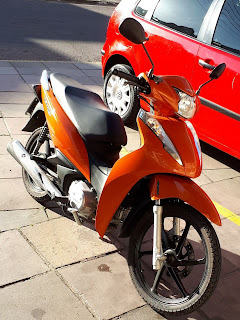

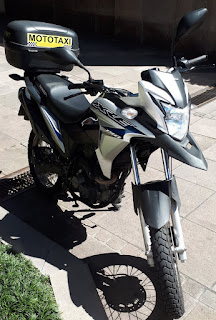
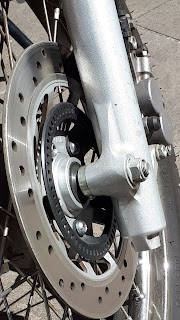
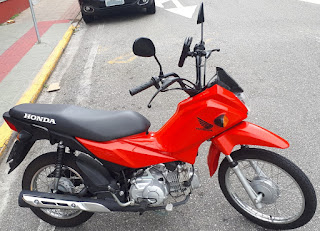
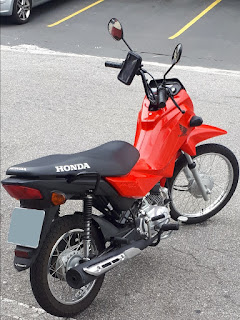
No comments:
Post a Comment
Only comments written in English are published. Not so rigid about the grammar, but some regional slang should be avoided to make it clear and easily understandable.